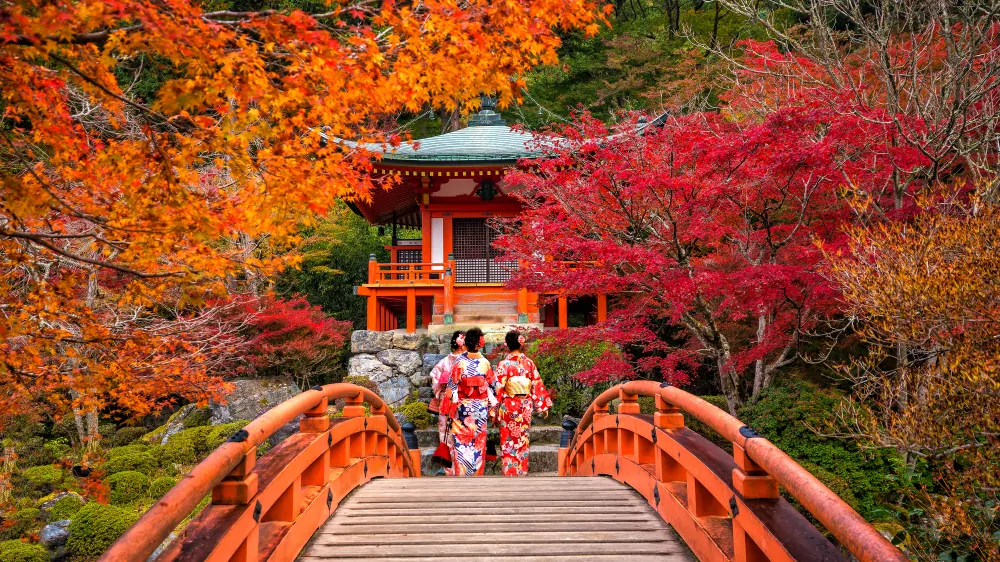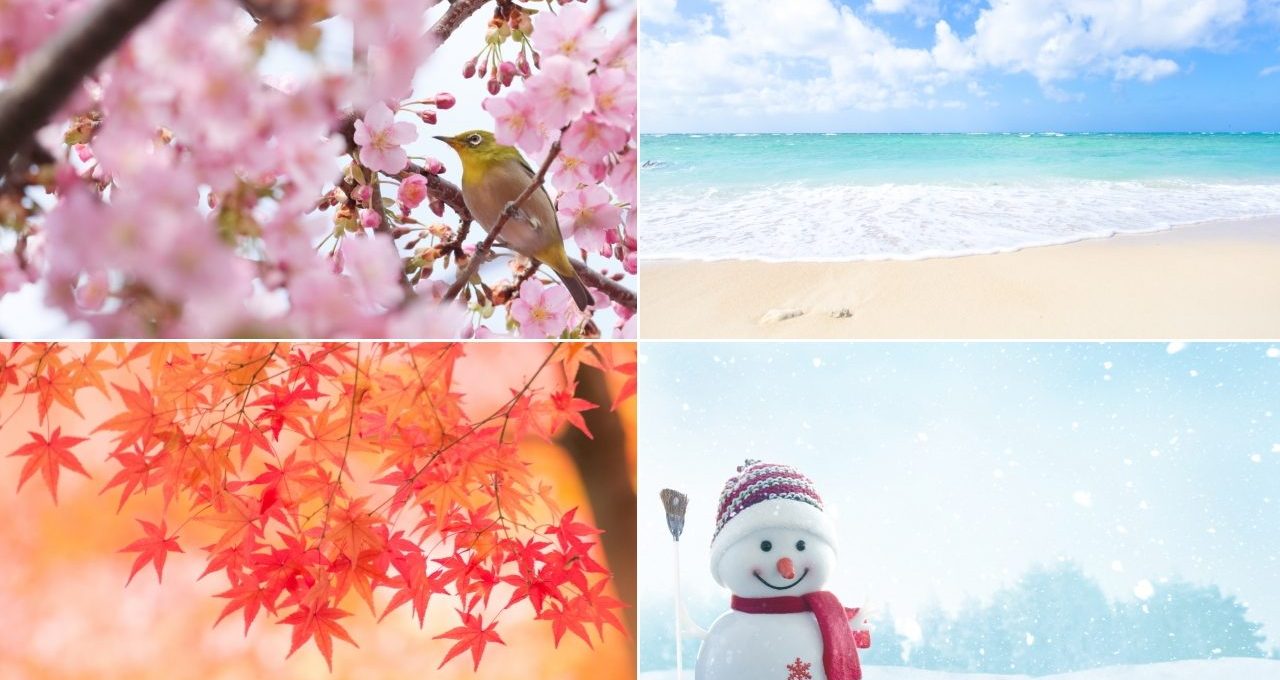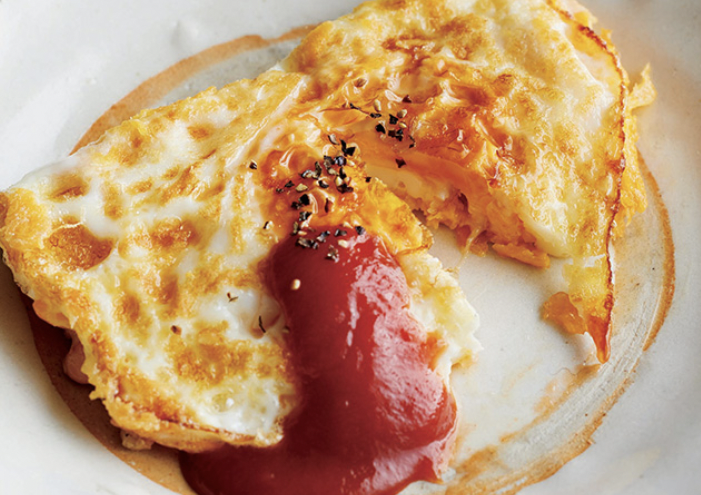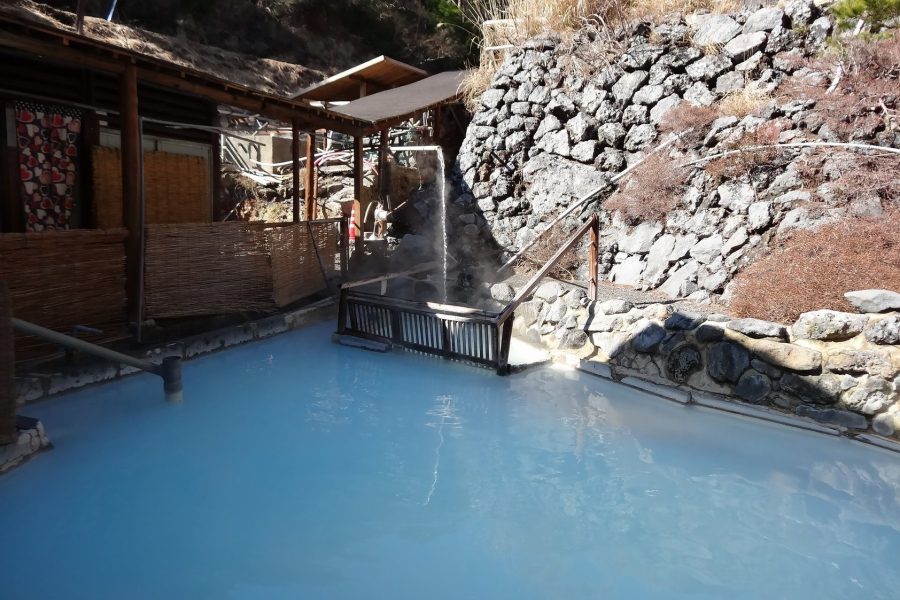The seasons of Japan are known for having some of the most striking features in the world. Each season has its beauty, aesthetic drama, and related events.
The country is also famous for its festivals. Several of these celebrate various spiritual events and holidays, but many festivals and events are dedicated to essential aspects of the seasons.
The cherry blossoms in spring, fireworks and flora in summer, autumn foliage, and winter snowfall are just a few of Japan’s many seasonal attractions.
With four distinct seasons, there are so many different things to experience during your stay, accordingly to the period you visit Japan.
Spring

Springtime is an especially wonderful time to visit Japan. Many travelers say it is the best time to see the country. The Spring Season begins in March and ends in May. The weather is pleasant, with warm temperatures and many sunny days.
Visitors can enjoy Ume matsuri and the plum blossom celebrations in early spring. The pink and white flowers of the plum tree blossom mainly in mountainous regions. You’ll see them in public parks, on the premises of shrines and temples, and along some streets.
Towards late March and early April, the famous Hanami or cherry blossom viewing festival, an important time of the year in Japanese culture, takes place all over Japan. Known in Japanese as Sakura, the cherry trees’ gorgeous, light pink blossoms are quintessential Japanese sights. One of the best regions for Sakura viewing in Kyoto, a cultural hub in Japan located near Osaka in the west of the country.
Residents and tourists love to take part in cherry blossom festivals. People typically book picnic spots at renowned cherry blossom festival grounds in advance. People enjoy bento and sake beneath the blooms. People can get entirely carried away with the celebratory mood!
Spring is also when Golden Week happens. There are several national holidays from the end of April till the beginning of May, which the Japanese call Golden Week (Ōgon Shūkan or Ōgata Renkyū). There are loads of celebrations during this festive time.
Some of the best-known spring celebrations around Japan include:
- Aoi Matsuri
- Asakusa Sanja Matsuri
- Kawazu Cherry Blossom Festival
- Odawara Ume Matsuri
- Hanami Matsuri
- Ume Matsuri
- Hana Matsuri
- Atami Baien Ume Matsuri
- Takinoue Park Shibazakura Festival
- Kanda Matsuri
- Kakunodate Cherry Blossom Festival
- Kurayami Matsuri
- Sapporo Lilac Festival
- Sanja Matsuri
- Fuji Shibazakura Matsuri
- Fuji Matsuri, Tonami Tulip Fair
- Bunkyo Tsutsuji Matsuri
- Sanno Matsuri
- Kanamara Matsuri
- Takayama Matsuri, etc.
Summer

The summer season in Japan is surprisingly steamy and sticky, with high temperatures and humidity levels. However, the heat doesn’t prevent residents and travelers from making the most of the summer festivals and other functions.
The Japanese summer begins in June and ends in late August or early September. A rainy season usually lasts three or four weeks during these humid summer months. The rainy season can be inconvenient to sightsee and get out and about. This is useful to remember if you’re traveling there from far away.
People tend to take their beach holidays to places like Okinawa and Wakayama at the height of summer. These holiday spots’ turquoise, clear waters and lush foliage are spectacular.
Another worthwhile visit is to Hokkaido, where you’ll see endless fields of tulips, poppies, sunflowers, lavender, and other flowers. Summer is also a time when Japanese farmers plant their rice paddies.
Many people spend more time in parks and gardens in the summer. There are several summer events on these public grounds. Japanese people wear summery yukata garments during this time, especially at festivals.
The top summer events and festivals to see include:
- Aomori Nebuta Matsuri
- Akita Kanto Matsuri, Yokohama International Fireworks
- Sumida River Fireworks Festival
- Tokyo Bay Ground Fireworks Festival
- Setagaya-ku Tamagawa Hanabi
- Nakafurano Lavender Festival
- Gion Festival
- Sumiyoshi Rice Planting Festival
- O-bon Week
- Kanto Festival
- Harajuku Omotesando Genki Matsuri Super Yosakoi
- Asakusa Samba Carnival
- Nango Summer Jazz Festival
- Shinjuku Eisa
- Koenji Awa Odori
- Grand Sumo Tournament
- Tokushima Awa Odori Folk Dance Festival, etc
Autumn

The cooler air of autumn always comes as a relief after the intensity of the Japanese summer. The light turns softer, the temperatures and humidity drop, and the trees lose their greenery.
The autumn season is typically in September, October, and sometimes early November.
The gorgeous fall foliage is one of the best things about the Japanese autumn. A range of trees put on quite an autumn display, with colors ranging from yellow, orange, or auburn to crimson. The Japanese maple trees are especially stunning in fall with their crimson leaves.
Kyoto is again one of the best places to see Japan’s fall foliage. The area has many parks, gardens, shrines, temples, and forested areas. The region also is the home of many important fall festivals.
Some of Japan’s best-loved autumn happenings include:
- Arimatsu Festival
- Takayama Autumn Festival
- Koyo Festival
- Sapporo Autumn Fest
- Naha Matsuri
- Shuki Taisai Grand Autumn Festival
- Zuiki Festival
- Ohara Matsuri
- Karatsu Kunchi
- Kishiwada Danjiri Matsuri
- Nihonmatsu Lantern festival
- Jidai Matsuri
- Nagasaki Kunchi
- Jidai Matsuri etc.
Winter

The Winter season is unexpectedly cold in Japan. It snows in most places across the country, except on some islands and coastal spots. There can be blizzards as well.
The winter in Japan lasts from early December through February, and the temperatures can get relatively low – even going into the negatives on very chilly days. Nonetheless, it’s still a popular tourist season.
Many residents and visitors head to Japan’s famous ski resorts to watch and participate in winter sports. The winter days can be clear and sunny in areas outside the cities. Spotting snowfall on the mountains in these areas is a sightseer’s dream – stunningly beautiful.
There are several winter festivals to enjoy, too. The Sapporo snow festival in Hokkaido is particularly worthwhile. It is an internationally recognized ice and snow festival. Visitors can view a range of ice sculptures and enjoy other festivities and activities.
Some of the other most magical winter festivals in Japan include:
- Yokote Kamakura Snow Festival
- Sapporo Snow Festival
- Dosojin Fire Festival
- Chichibu Yomatsuri
- Asahikawa Winter Festival
- Lake Towada Snow Festival
- Hadaka Matsuri
- Hirosaki Castle Snow Lantern Festival
- Tokamachi Snow Festival
- Coming of Age Day Ceremony
- Lake Shikotsu Ice Festival
- The Wakakusa Yamayaki
- Otaru Snow Light Path Festival
- Iwate Snow Festival, etc.
Some Final Thoughts About Japanese Four Seasons
As you can see, all four seasons in Japan have something to offer. The unique features and celebrations we’ve mentioned here are just a few wonders you’d find when visiting the different seasons in Japan.
Frequently Asked Questions about the Different Seasons in Japan:
Japan has four seasons: spring, summer, autumn, and winter. Various seasonal Throughout various seasons, Japan offers many different experiences depending on when you travel to Japan.





Leave a Comment